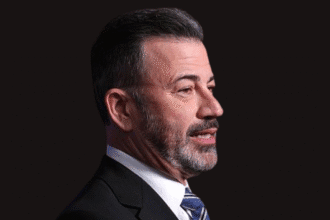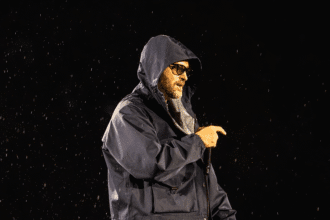A judge has decided that in the Blake Lively legal tussle against actor-producer Justin Baldoni that some messages between actor Blake Lively and Taylor Swift could be allowed as evidence in the case. Answering the motions of both sides, the judge considered the communications connected to the accusation of harassment and retaliation on the set of It Ends With Us. Lively was trying to prevent their revelation in court based on their irrelevancy, but the court ruled that such talks might be directly relevant to some allegations concerning on-set conditions.
- Why are these messages taken to be relevant in the Blake Lively Legal case?
- What was the reaction of the Blake Lively legal team?
- What has been the Legal approach of Justin Baldoni?
- What does the Rule of the Judge entail regarding Privacy and Celebrity Communications?
- Will the Wider Precedent be Possible in the Blake Lively Legal Scenario?
- How would the two parties tend to use these messages?
- What Does That Signify to Taylor Swift?
- What can the Blake Lively legal case bring to industry practice?
- What is the Future of the Legal Process?
- What Can Other People learn from this Blake Lively Legal Issue?
- Final Thoughts
Why are these messages taken to be relevant in the Blake Lively Legal case?
Legally, relevance is one of the major determinants, and Judge Liman ruled that the texts of Swift might be used to prove or disprove the allegations of Lively. Lively and Swift, they discussed inappropriate behavior on sets and the working environment, issues critical to harassment allegations. Consequently, messages can indicate whether Lively had certain complaints or insights to Swift, revealing her frame of mind or supporting happenings. Thus, the inclusion of the messages is not a fishing practice but a selective one so as to aid or challenge legal claims. Here is the link to our article on Record-Breaking Animation
What was the reaction of the Blake Lively legal team?
Lively lawyers were hot in opposing the release and said that Baldoni had used the subpoena she got against Taylor Swift as a means of seeking attention to publicity. According to them, Swift did not presently take part directly in the decision-making process of production, arguing that her participation would shift the focus off the main problems. At the same time, the legal team of Swift managed to persuade the court to release direct subpoenas due to inappropriateness and confidentiality considerations. However, the judge ruled out the above objections because Lively had already opened the door to scrutiny since she had cited the discussions between her and Swift, and therefore, the messages cannot be sealed away without discovery.
What has been the Legal approach of Justin Baldoni?
Baldoni and his legal advocates opine that in order to examine and peruse claims and defenses in totality, they need complete metrics on messages. It is to their argument that it is only sensible to review the texts pertinent to both harassment and retaliation. Of note, his defamation counter-suit was recently denied, granting a transition to more of an explanation on the allegation at the workplace. In this regard, the message request can be matched to a broad discovery process. Provided that the contexts in the messages have anything to say in the matter of the experience or the purpose of Lively, they might form both narrative and legal positioning.
What does the Rule of the Judge entail regarding Privacy and Celebrity Communications?
This ruling brings out a significant legal conflict between the privacy rights and relevance in a lawsuit. Celebrities usually communicate as a matter of confidentiality, but sometimes, when taken to court, it supersedes confidential communication, especially where such messages touch on facts in dispute. Judge Liman explained that in settling claims at the workplace courts have to strike a balance between privacy interests and the requirement of truth. In this way, even celebrity status cannot protect the communication even by people such as Lively and Swift in cases where it can have a material impact on litigation. Here is the link to our article on Judge Blocks Settlement
Will the Wider Precedent be Possible in the Blake Lively Legal Scenario?
This decision has the potential to affect how cases of defamation and harassment with respect to celebrities will deal with matters of messages in privacy in the future. It alerts that not only what is spoken publicly but also conversational exchanges, explaining the culture and conduct of the workplace, will be examined by courts. Observations in courtrooms have indicated that the case could establish significant precedent on the discovery of communications between social networking personalities, influencers, or any of the social media users who are subject to a legal action linked to interpersonal conflicts or workplace settings.
How would the two parties tend to use these messages?
On the side of the legal team of Lively, what is intended is to provide, as far as Swift is concerned, the words that she expressed as support for the experience of Lively. To Baldoni, the messages can show the mindset of Lively and support or refute allegations. In any case, quite direct lines between the text messages and on-set behavior contain notable probative value. Learning whether the production team or a defendant has ever been even warned about certain complaints might be crucial in addressing the allegations of retaliation or malpractice with safety in the workplace.
What Does That Signify to Taylor Swift?
Although Swift is no longer subpoenaed is still indirectly involved. The successful objection by her team saved some privacy, but there is still a chance that a text can be included in the public record. This event can lead to the rethinking of communication patterns and approval negotiation of the participants of such action in case of the subsequent disclosure of the conversation. It also creates concerns about how non-defendant parties are dragged into legal conflicts on the grounds of close associations with contested instances.
What can the Blake Lively legal case bring to industry practice?
In the entertainment world now, executives are documenting complaints, responses as and environmental conditions in writing. Production crews can also take measures to formalize recording complaints. The practices can protect against legal exposure and guarantee transparency. Simultaneously, actors and partners can change their manner of addressing workplace issues, as they learn that even confidential conversations can be subject to legal issues in the future.
What is the Future of the Legal Process?
The legal case of Blake Lively is moving to the discovery stage, and now the lawyers are examining pertinent messages. Lively, Baldoni, and other members of the cast or crew may come next in deposition. The media coverage can become higher with the appearance of messages. Nevertheless, both sides will still demand confidentiality by sealing applications and redactions. The n at the end of the day, in the event of a trial or settlement, those taped phone calls could make strong pieces of evidence.
What Can Other People learn from this Blake Lively Legal Issue?
The implications are even clearer when we are not present in Hollywood: legal claims may be involved in communications not meant to be brought to light. People ought to have mindful communications on issues related to professional matters. Both the employer and the employee ought to put in writing any differences they have and use any given procedure in the workplace to embrace formal steps instead of going to a personal or informal avenue that could be later deemed as legally important. This case acts as an eye-opener to be able to exercise transparency in professional relationships without presupposing privacy guarantees.
Final Thoughts
The current Blake Lively legal case highlights the way that workplace conflict, at least when it includes claims of harassment, has a tendency to become very broad, including way more than just the people directly involved. The discovery of personal messages by prominent individuals is showing a conflict between individual privacy and legal materiality, as it has expanded to cover messages sent privately. This decision could alter the communications of celebrities and public figures made in the working environment. Finally, actors and production crews will eventually find how to institutionalize complaint systems and minimize informal treatment because there is no secret text conversation that cannot be subpoenaed in court.







